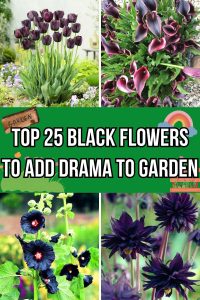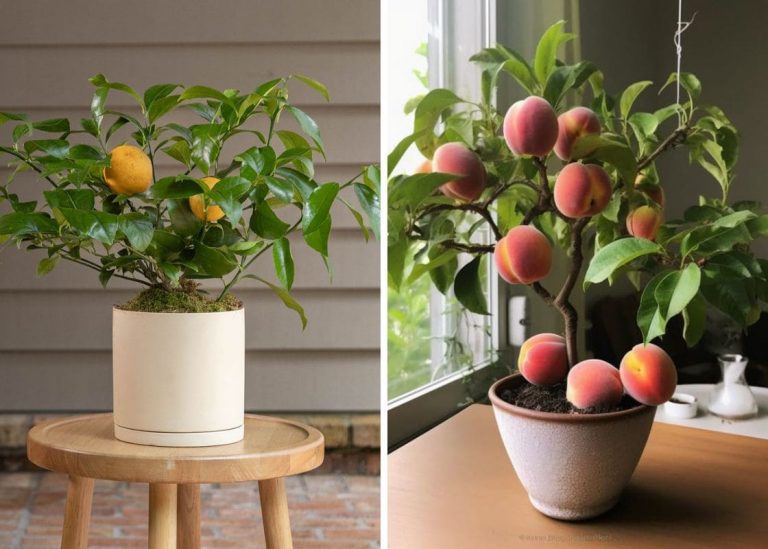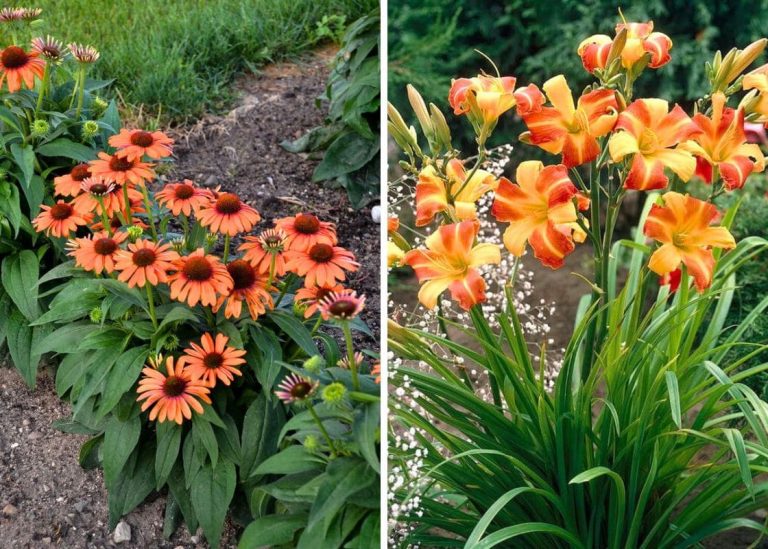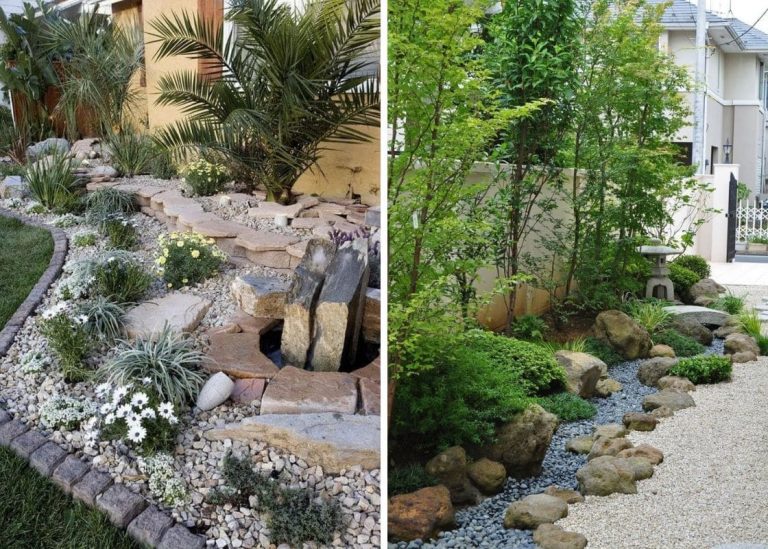25 Stunning Black Flowers to Add Drama and Elegance to Your Garden
One afternoon last summer, while pruning the dahlias near our fence line, my youngest daughter tugged at my shirt and pointed to a flower she called “the night one.” It was a nearly black peony poppy, blooming boldly among the pinks and whites like a whispered secret no one expected to find. Her eyes widened. “It looks like the moon forgot to shine on it,” she said.
It came from a scattered mix of seeds a neighbor had given me—no label, no promises. They don’t dazzle in the obvious way, but their elegance seeps in slowly, until your entire space feels richer, more intentional, more alive.
I used to believe color made a garden —until I discovered these black flowers. That moody edge of a dark tulip at dusk, the velvety quiet of a black viola in morning dew, or the silent drama of a hollyhock stretching skyward like an old cathedral spire—they each offer a kind of balance that bright blooms simply can’t. They anchor chaos. They whisper contrast. They create pause.
For my beloved readers, if your garden feels too predictable, too soft around the edges—let’s wander down a darker path together. Each flower holds a little story, a quiet thrill, or a curious surprise. And who knows? One of them might become your garden’s “night one.”
#1. Black Dahlia

Black Dahlias are flowers for those who love drama—graceful, deliberate, unforgettable drama. When I planted my first one, I was curious and skeptical they’d be anything more than a novelty. But when they bloomed—oh, they owned their space. Each petal was like a brushstroke of deep velvet red, dark enough to pass for black in the early morning haze.
In a sunny corner near my garden shed, they reached nearly four feet high, swaying like dancers in long, dark gowns. I’ve found they love warmth, well-drained soil, and a touch of patience. Digging up the tubers each fall feels like tucking away a precious keepsake, knowing I’ll bring them out again when the world is ready to bloom.
#2. Queen of Night Tulip
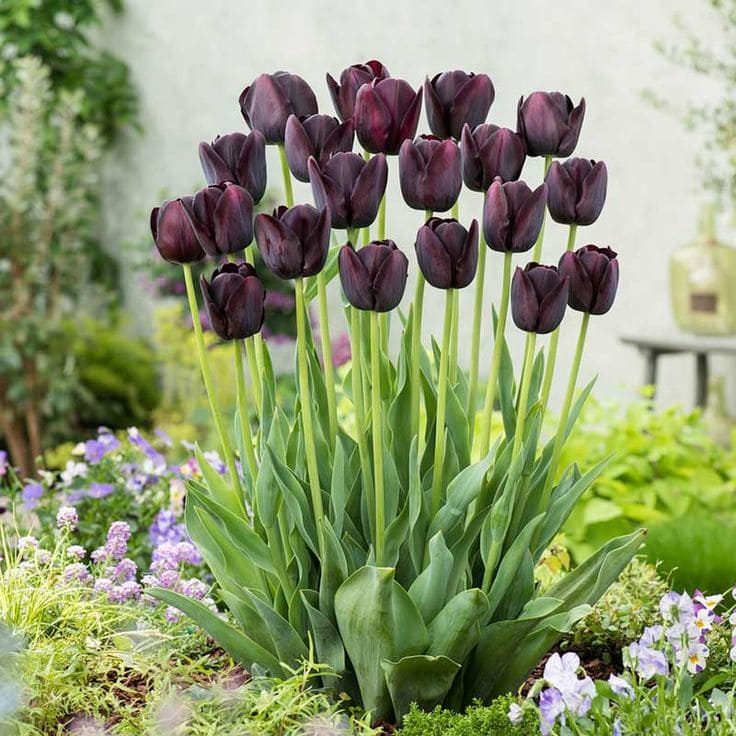
I once saw an entire border of Queen of Night tulips lining the stone path of a small town library. It was like walking through a dream at twilight. Their glossy, deep-purple petals flickered black in the afternoon light, and I stood there, forgetting my errands, just watching them move with the wind.
Back home, I planted a dozen near my grape hyacinths—and the contrast made everything pop. They bloom in late spring, regal and refined, reaching just about two feet tall. Tuck the bulbs in before winter settles in, and they’ll emerge like royalty rising from the frost. These tulips don’t clamor for attention—they command it.
#3. Black Velvet Petunia

The first time I saw a Black Velvet Petunia was in a hanging basket outside a florist’s shop. It was like looking into a well of ink, the petals absorbing light and sound in equal measure. I brought one home and placed it beside a pot of golden marigolds—what a pairing! Dark and cheerful, side by side.
They stay compact, never more than a foot tall, but don’t let their size fool you. These annuals bloom endlessly with a bit of deadheading and regular watering. They thrive in full sun, but I’ve had them flourish in dappled light too. If you’ve got a patio in need of personality, let this little gothic beauty be your quiet rebel.
#4. Black Calla Lily
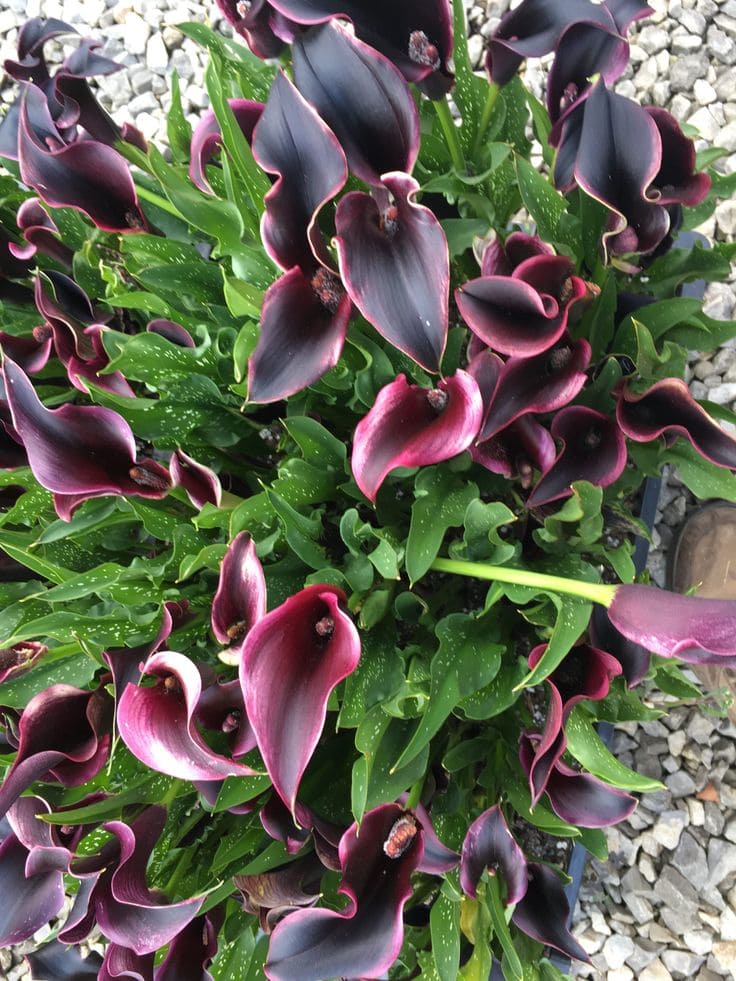
My grandmother once called calla lilies “the flowers that know how to hold themselves.” She wasn’t wrong. Their form is architectural—elegant, almost statuesque. The black variety, though, adds something more: mystery. When I planted mine near the pond, their inky blooms mirrored the water, and for a moment each evening, the two became indistinguishable.
These beauties prefer moist, rich soil and a bit of afternoon shade to keep their color deep. In containers, they’re a standout centerpiece. I fertilize gently through the growing season, and the reward is sculptural blooms that never seem to fade or falter. A single stem in a vase can change the entire room’s mood.
#5. Black Baccara Rose

Of all the roses I’ve grown, none have the presence of the Black Baccara. It’s not just their deep, wine-dark color—it’s the way their petals catch light, the way they hold your gaze like a secret. I planted one for our anniversary and still smile when its first bloom arrives like a slow, sultry whisper.
Black Baccara needs full sun and rich, well-drained soil, and oh, does it love to be pampered. Weekly deep watering and a layer of mulch keep it happy. Prune it gently, talk to it kindly (yes, I do!), and it’ll give you blooms worthy of any poem. They look unreal, as if crafted for a fairytale. But I promise—they’re very real. And very worth it.
#6. Bat Orchid

Tucked beneath the greenhouse mist, the Bat Orchid looks like a creature from folklore. Its black-purple petals drape like velvet wings, with delicate whiskers stretching out like antennae. I saw one blooming in a conservatory in Chiang Mai—it didn’t just bloom, it haunted the room.
This tropical gem craves humidity, warmth, and filtered light. It’s not for the faint of heart or dry windowsills, but for those willing to mimic the jungle, it rewards with something rare and mesmerizing.
#7. Black Hollyhock
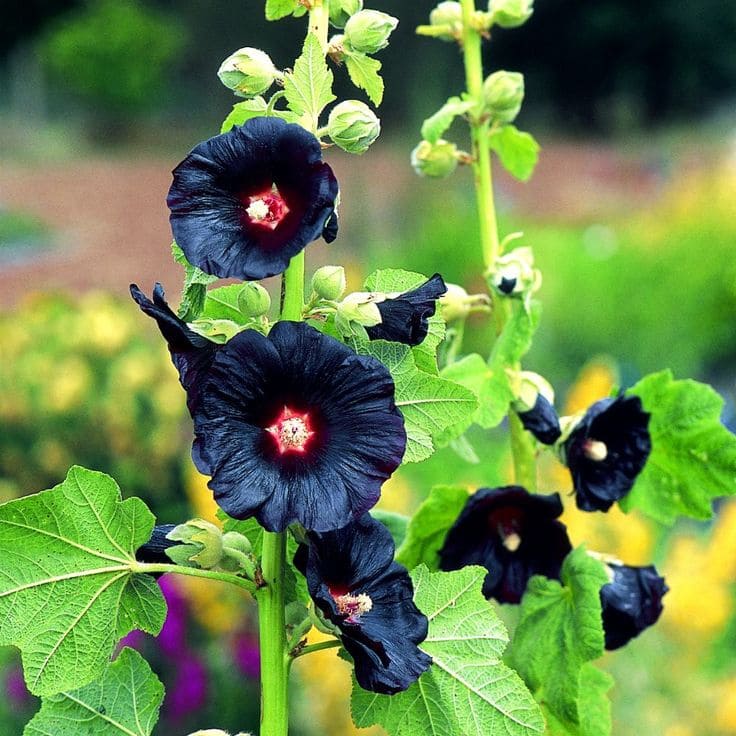
These towering blooms remind me of my great-aunt’s cottage, where black hollyhocks grew like guardians beside her weathered fence. Tall and solemn, they opened one by one, their deep maroon-black petals soft like old velvet dresses.
They need full sun and space to stretch—up to 8 feet tall. Biennials by nature, they ask for patience in year one, but their second-year display? Pure gothic romance.
#8. Black Magic Viola

Tiny but striking, Black Magic Violas are the garden’s moody little musicians. Their petals—inky black with golden hearts—hum quietly in cooler seasons, softening edges and surprising passersby.
Perfect for edging paths or pots near the front door, they thrive in partial shade and damp, fertile soil. I plant them where I can admire their detail up close—no bloom is ever quite the same.
#9. Chocolate Cosmos
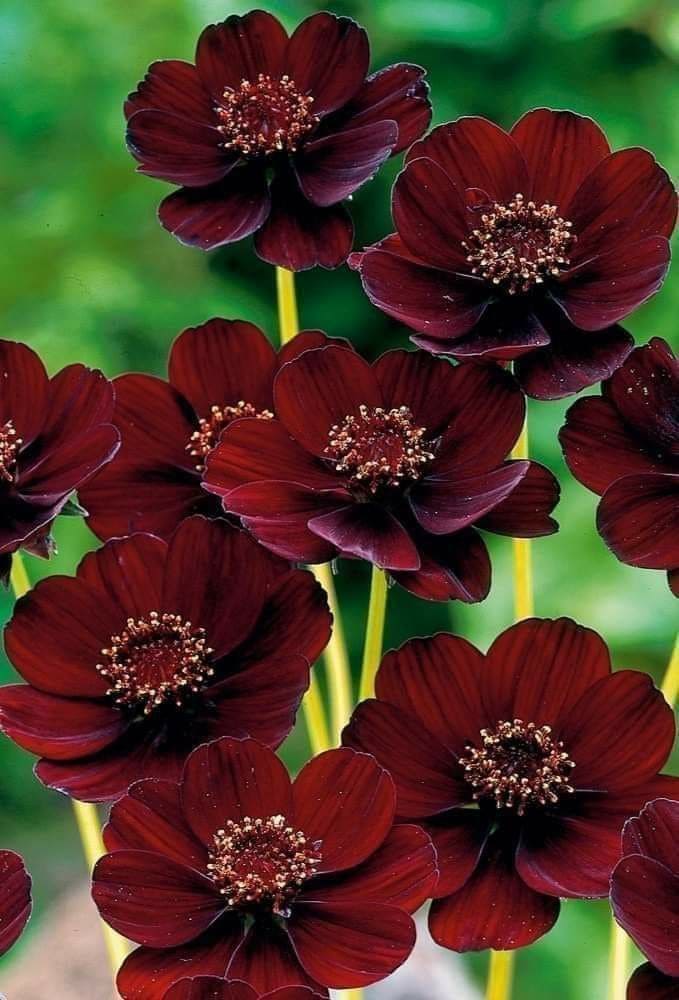
I’ll never forget leaning in and catching the scent for the first time—rich, like cocoa powder in a sunbeam. Chocolate Cosmos aren’t just beautiful; they’re nostalgic. The petals look painted in burnt coffee, and the scent carries you straight to a childhood memory.
Give them full sun, good drainage, and they’ll bloom into autumn. Deadheading keeps them fresh, but even fading, they’re a delight.
#10. Black Beauty Hellebore
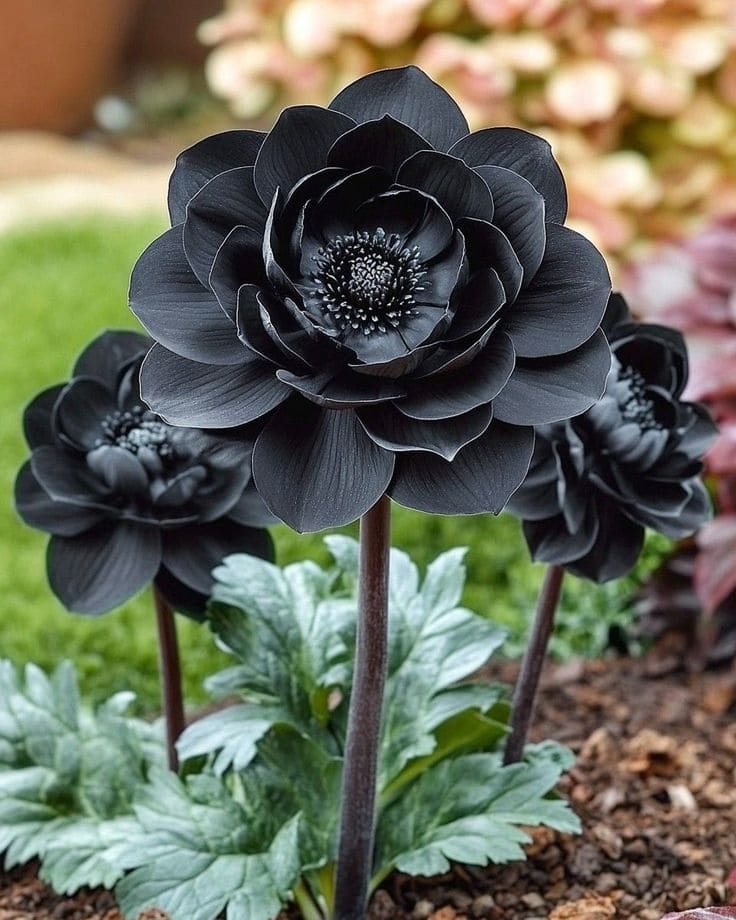
The first flower to greet me after a long winter is almost always this hellebore. Its plum-black petals, crinkled and graceful, feel like nature’s quiet way of reminding me that beauty doesn’t need to shout. Nestled beneath evergreen leaves, it blooms in the soft hush of late winter.
It thrives in partial shade and well-drained, humus-rich soil. I mulch around the base in fall to protect roots and retain moisture—come February, its blooms always feel like a gift I didn’t know I needed.
#11. Black Iris
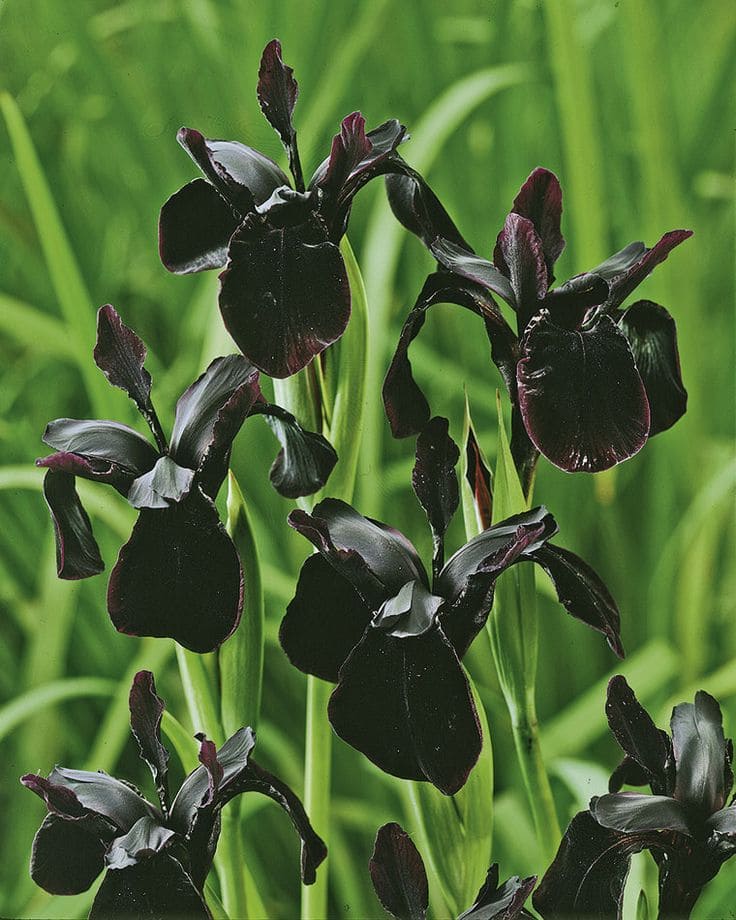
Tall, proud, and regal—Black Iris is the queen of spring drama. I remember planting a few rhizomes by the fence, unsure they’d survive the wind. But bloom they did, with petals so deep and velvety they almost looked unreal.
Give them full sun and keep their feet dry—good drainage is essential. I divide the rhizomes every few years and replant them like old friends returning home. They never disappoint.
#12. Black Prince Snapdragon
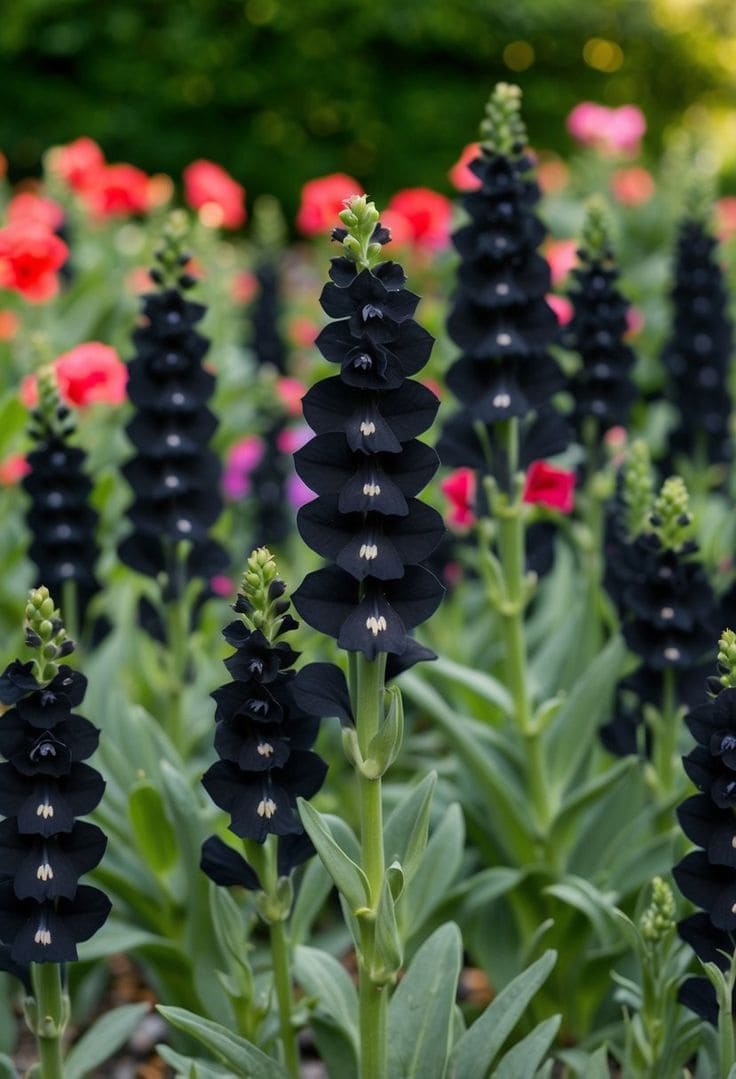
These snapdragons have the heart of an old tale—dark, romantic, and surprisingly tough. Their deep burgundy-black flowers pop beautifully against silvery foliage, especially when planted in cooler spring weather.
They love full sun and regular watering. I pinch them back early to keep them bushy and blooming. My kids still press the blooms to make them “talk”—a little whimsy never hurt a serious flower.
#13. Black Dragon Coleus
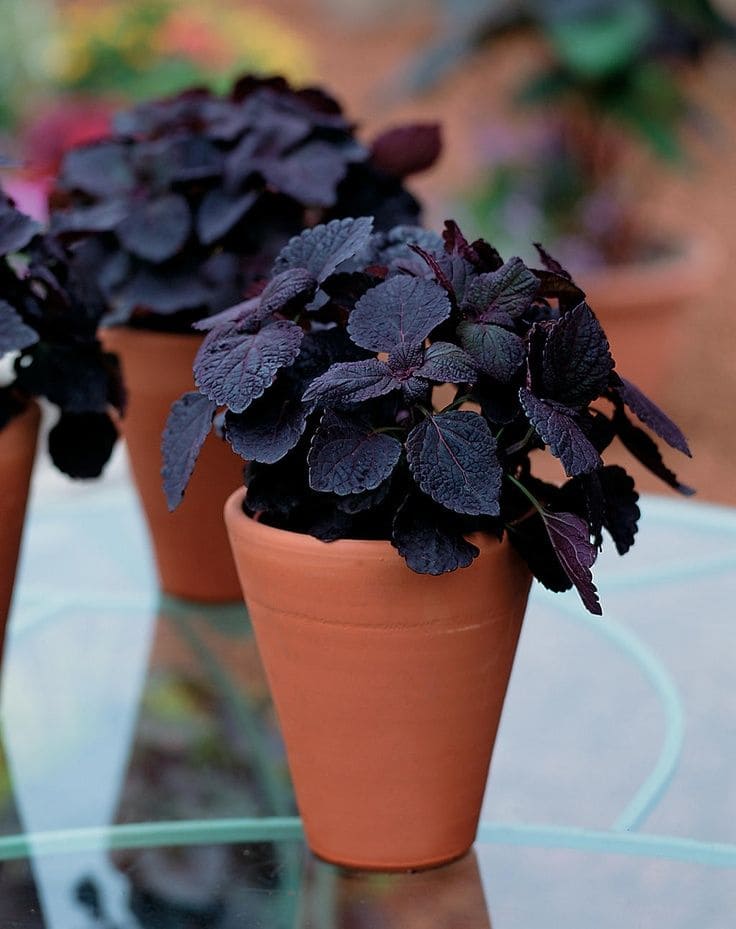
Though not a flower in the usual sense, Black Dragon Coleus stuns with its ruffled, moody leaves. I often use it to fill the shadows between brighter plants—its presence is grounding, textural, and full of depth.
It does best in shade to part sun. Regular pinching encourages bushiness, and it shines in containers and borders alike. Even without a bloom, it tells its own story.
#14. Black Mondo Grass
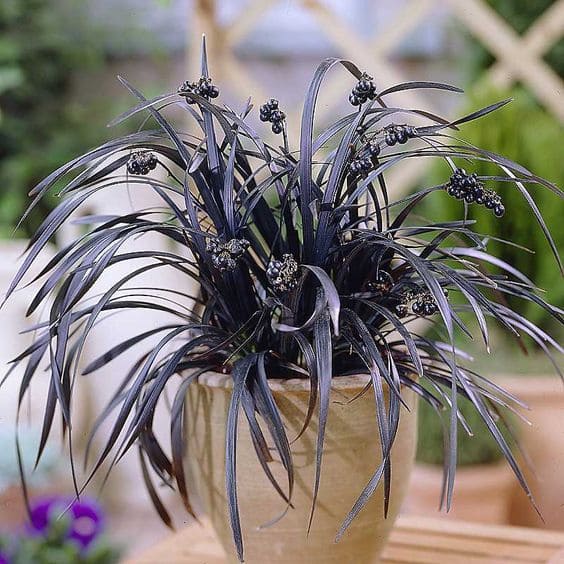
Slender, jet-black leaves ripple like dark water along paths and borders. Black Mondo Grass has a subtle presence—one that adds contrast and polish to any planting.
It tolerates partial shade and poor soil, though I’ve found it happiest in loamy, slightly moist conditions. Plant it in clusters for best effect and divide clumps every few years to keep it thriving.
#15. Black Peony Poppy
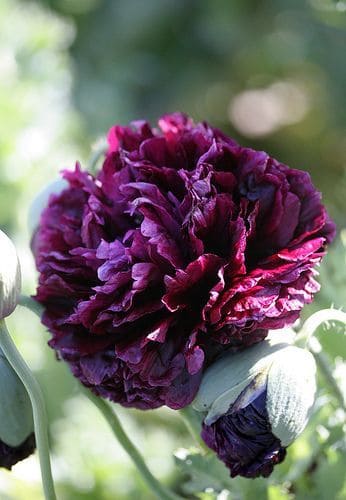
The first time I saw these poppies bloom, I gasped. Their petals ruffled like crêpe paper, deep and dramatic like a stage curtain about to rise. I grow them in the sunniest spot in my garden, and each one feels like a fleeting miracle.
Sow the seeds directly into the soil in early spring. They don’t like to be moved, but once rooted, they bloom with abandon. Just a little water and room to stretch—and they’ll take care of the rest.
#16. Black Scabiosa

Sometimes called the pincushion flower, Black Scabiosa is both soft and edgy. The nearly black blooms draw bees by the dozens, dancing around their textured centers.
They love full sun and rich soil. Deadheading spent flowers keeps them going strong. I love tucking them into bouquets—they add a moody flourish without overpowering the rest.
#17. Black Pansy
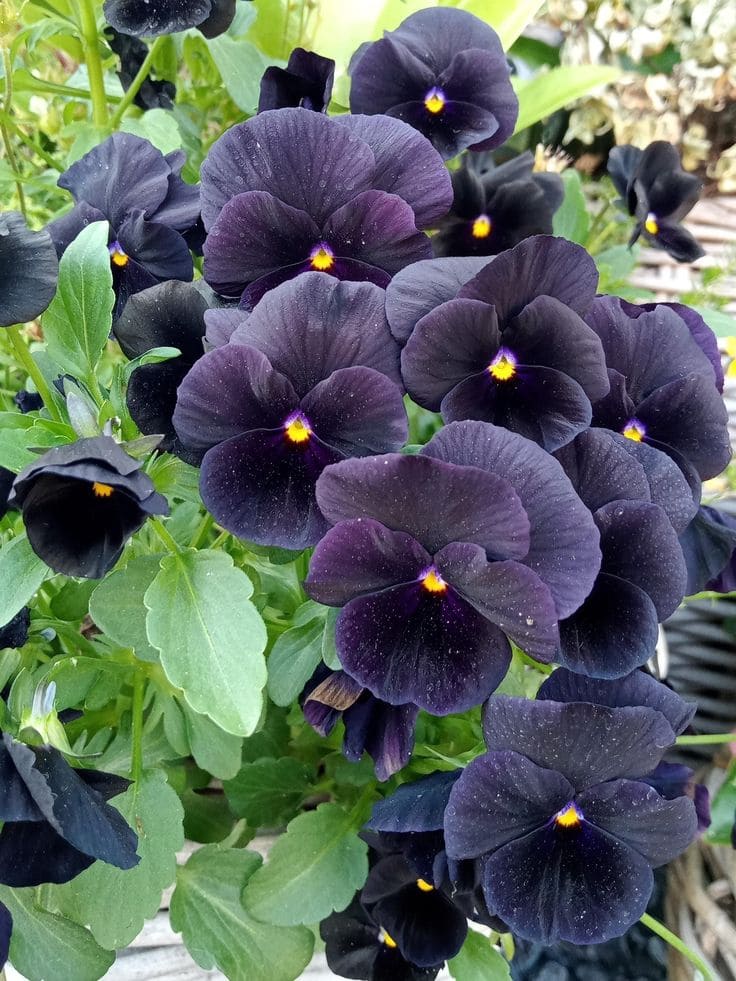
These compact blooms wear black like velvet evening gowns—glamorous, yet grounded. I love planting them in window boxes to greet early spring or late autumn visitors.
They thrive in cool weather and partial sun. Keep them watered and deadheaded, and they’ll reward you with a steady show of blooms that always make me smile.
#18. Black Widow Cranesbill
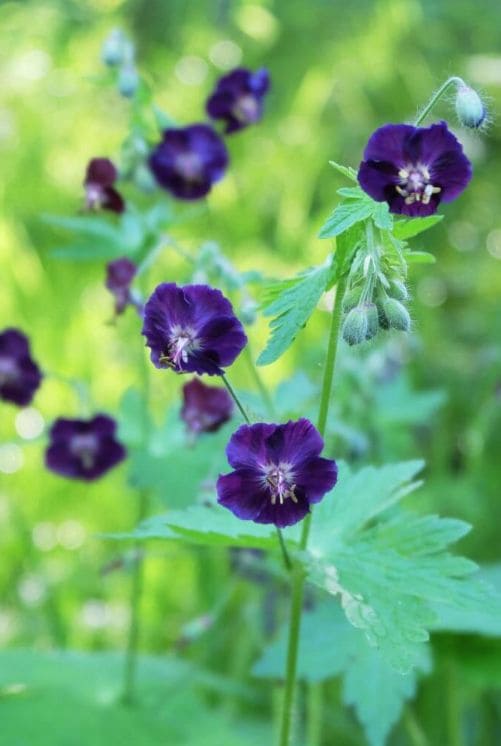
Tough yet elegant, Black Widow Cranesbill features dark-centered flowers that shimmer like wet ink in the sun. I plant them under taller perennials to create contrast and softness.
They’re drought-tolerant once settled and do well in moist, well-drained soil. I trim back after the first bloom for a second flush in fall. It’s one of those perennials that quietly earns its keep.
#19. Black Cat Pussy Willow
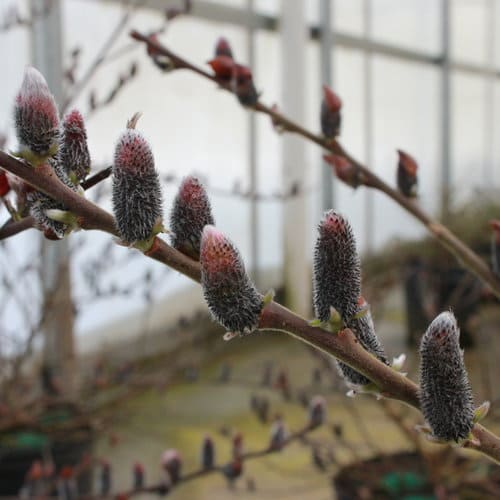
Every March, before anything else dares bloom, these fuzzy black catkins appear like silent magic on bare branches. I keep one near the gate just to watch the seasons turn.
They love moisture and full sun. Prune after flowering to shape it, and it’ll keep showing up like an old friend each spring. Even the kids can’t resist petting the soft buds.
#20. Black Knight Butterfly Bush
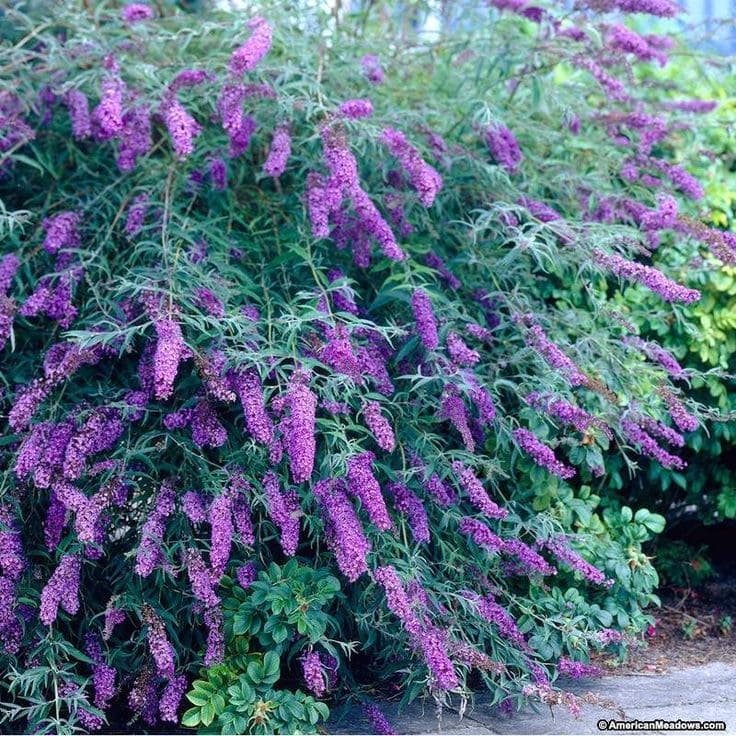
Butterflies adore it, and so do I. This tall shrub sends up long spires of nearly black flowers from summer into fall, bringing life and motion to even the quietest corners.
Full sun and well-drained soil are key. I cut it back each spring and it always rebounds bigger, better, more dramatic. If you want movement and magic in your garden, this one’s a must.
#21. Ebony and Ivory Columbine
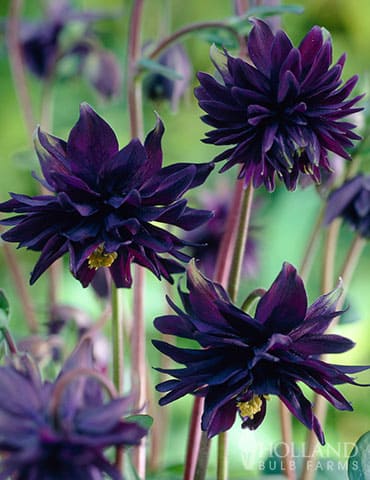
This flower feels like a contradiction in bloom. The black-purple outer petals wrap around a creamy center, as if the two were meant to dance together. It’s delicate, upright, and full of charm.
Columbines love part shade and good drainage. They self-seed gently, so I let them roam a bit—each season, I discover a few new ones that chose where they wanted to grow.
#22. Black Star Clematis
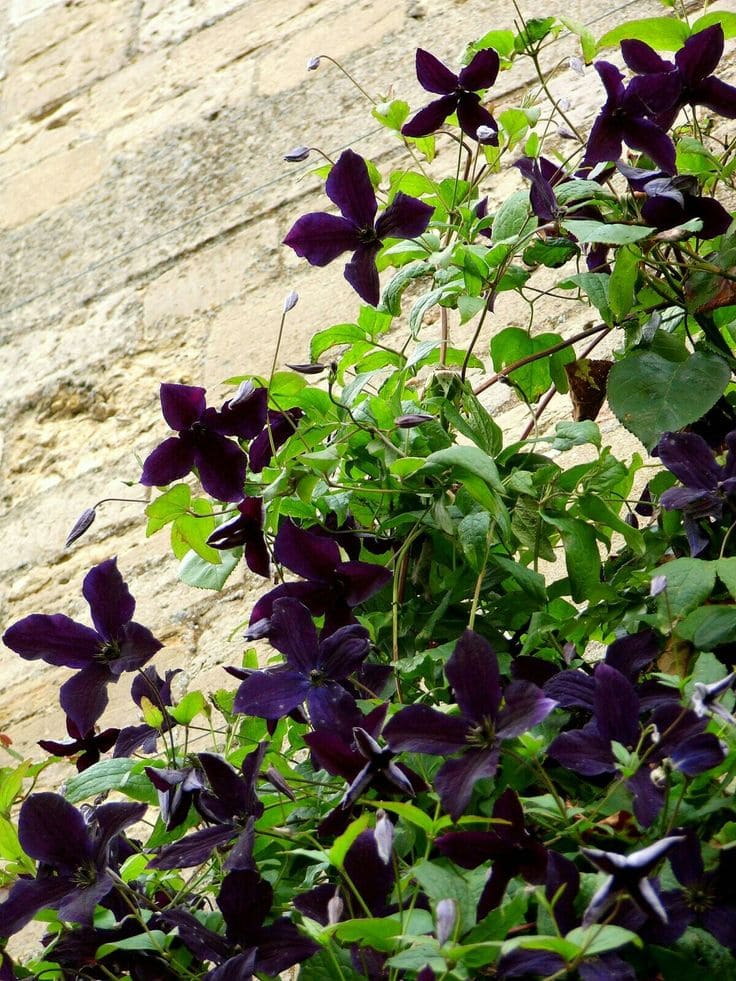
Climbing across my arbor is a Black Star Clematis, its dark blooms blooming like velvet pinwheels. Visitors often stop and ask, “What is that?” and I always smile—it’s just that kind of flower.
Sun on the vines, shade on the roots—that’s the trick. I use mulch or low-growing companions to keep the base cool. A simple trellis is all it needs to rise and dazzle.
#23. Black Magic Mangave

Part succulent, part sculpture—this plant looks like it belongs in an art gallery. Its rosettes of sharp, spiky, purple-black leaves give it a striking edge in containers or rock gardens.
Loves full sun and infrequent watering. Let the soil dry completely between drinks. It’s tough, modern, and somehow always elegant, even in drought conditions.
#24. Black Pearl Pepper
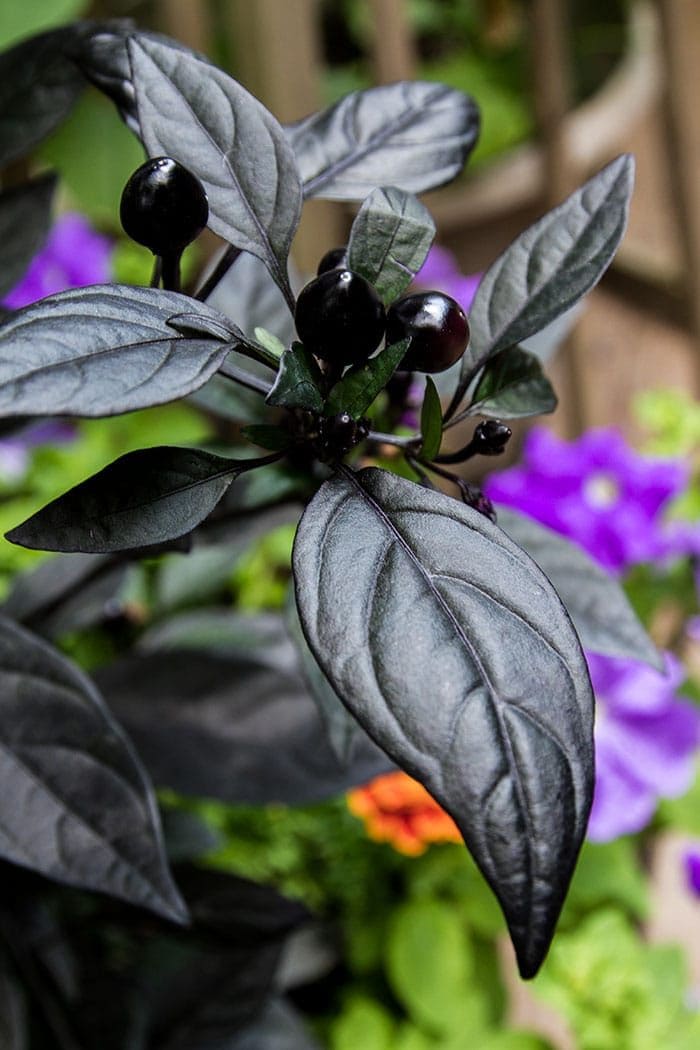
This ornamental pepper is pure attitude. Its glossy black leaves and fruits look almost lacquered, and when the tiny peppers ripen to red, it’s a visual firework. I keep a pot near my kitchen door just to admire.
Grow it in full sun, water consistently, and it’ll thrive. The peppers are edible—but spicy! For me, it’s the foliage that steals the show, adding an unexpected drama to edible beds and flower borders alike.
Final Thoughts
Growing black flowers feels like writing a quiet love letter to your garden. Each one brings mood, contrast, and a kind of elegance that doesn’t shout—it simply settles in, deepening everything around it. They don’t compete with brighter blooms; they elevate them. They add soul to a space that might otherwise feel too predictable or too polished.
As gardeners, we often chase the vibrant and the obvious—but sometimes, it’s the shadowed tones that offer the biggest surprises. If you’ve never tried planting one of these before, maybe this is your season to explore the unexpected.
I’d love to know what calls to you—whether it’s the velvety sweep of a dahlia or the haunting stillness of a hellebore. Share your garden stories with me. Let’s keep growing this community, one bloom at a time.
